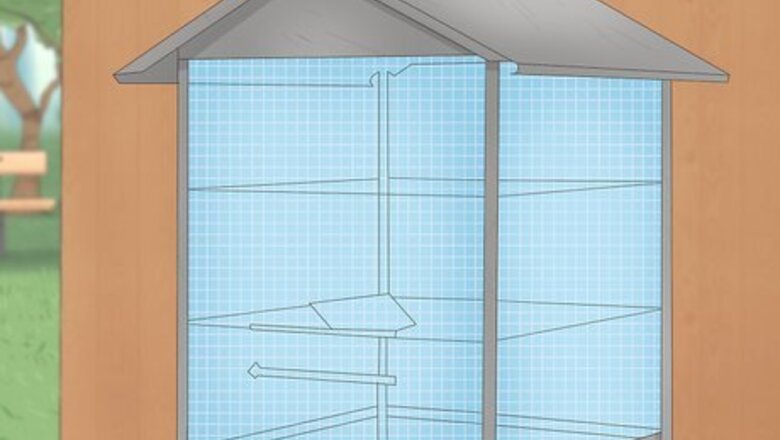
views
Creating a Habitat
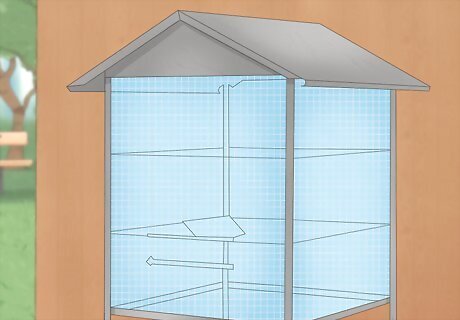
Find a large cage. Your mynah bird’s cage should provide easy access for cleaning as well as plenty of room for your bird. The typical dimensions of a mynah bird cage are 3-4 feet wide (90-100cm) by 2 feet tall (60cm) by 2 feet deep (60cm). Because they are such a rarity, it can be hard to find an affordable cage that is specifically made for mynah birds. Most large cages are built for parrots that require less room.. If you are in a pinch, you can put together two parrot cages.
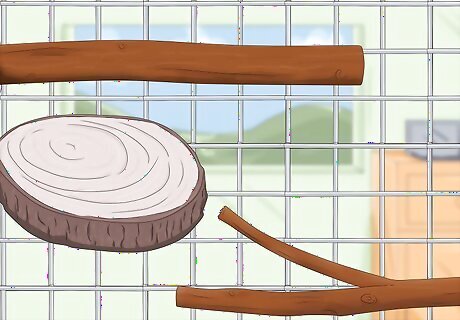
Provide perches. Because they enjoy hopping around, place a variety of wooden or plastic perches in your mynah bird’s cage. The diameters of the perches should be about one inch (2.5cm). These will help prevent foot injuries and the development of arthritis. Avoid rope perches because the bird’s toenails can get caught in them.
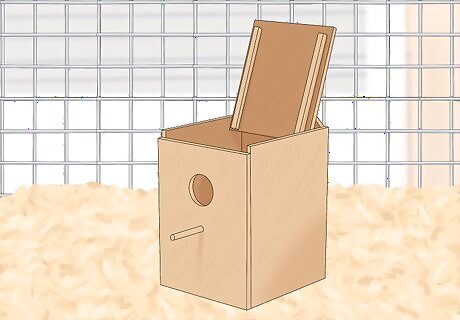
Place a nest box in the cage. Because mynah birds take multiple short naps during the day, you will want to install a dark place for them to sleep. The best option is a nest box. Simply buy a nest box at a pet store and place it inside the bird’s cage. You can also build your own nest box out of a soft wood or cardboard. However, a cardboard nest box will need to be replaced regularly. Be sure to follow the manufacturer’s guidelines when installing the nest box.
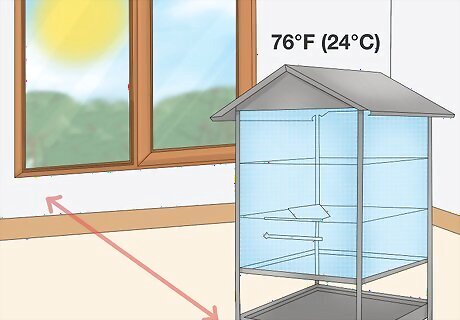
Maintain a comfortable environment. Find a comfortable place in your home that is near sunlight but not directly in it. Mynah birds also enjoy room temperature (76 degrees Fahrenheit or 24 degrees Celsius) but can acclimate to slightly colder temperatures. If your bird does not have any exposure to sunlight, you may need to install a light fixture.
Meeting Your Mynah Bird’s Needs
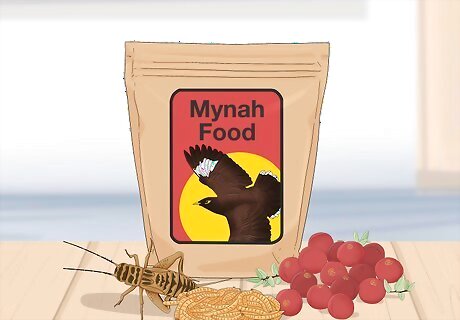
Provide a healthy diet. Mynah birds are omnivorous and, in the wild, eat a variety of fruits, nuts, insects and small animals. In captivity, you may find that it is expensive and difficult to provide your bird with a regular supply of these foods. Instead, you will likely want to feed your animal a steady diet of pellets designed specifically for mynah birds. Also, because mynah birds do not bite and chew their food, it is important that the food is presented in bite-sized pieces. Because mynah birds suffer from hemochromatosis, or an inability to store iron, you should feed them low iron (150 parts per million) mynah bird pellets. These pellets should be roughly 60% of your bird’s diet. Unless you are breeding birds, insects should not be more than 5% of your bird’s diet. If your mynah bird’s diet is less than 60% pellets, you may want to consider various supplements.
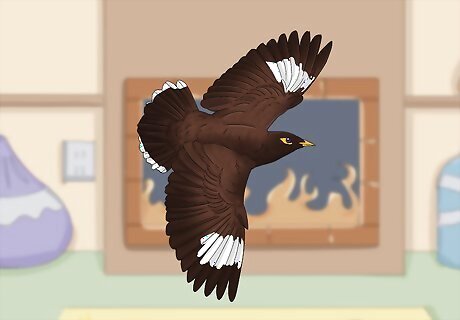
Exercise your bird. If your mynah bird has been socialized since birth, you can let it out of its cage to fly around your home. However, before you let your bird out of its cage, make sure that you have closed all of the windows and doors, turned off any fans, covered any water, and ensured that there are not any predators around, such as house cats. Also, remember that mynah birds are not a hands-on bird and will not perch on your hand like a parrot. You may want to clip your birds wings. Without a clipping, mynah birds can lose their balance and have a difficult time landing. This can result in injury or death.
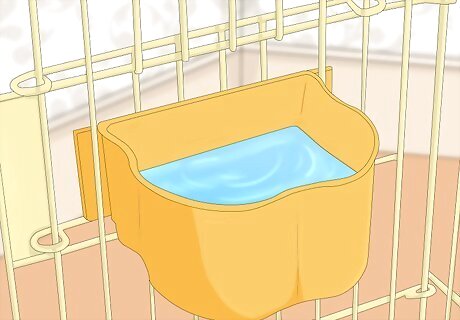
Allow the bird to groom. Mynah birds are fastidious creatures and bathe multiple times a day. The easiest way to meet their bathing needs is to place a shallow dish of water in your bird’s habitat. Make sure to change the dish water on a regular basis, as the bird’s droppings will likely fall in it throughout the day. Because of their sensitivity to chemicals and pathogens, be sure to fill your bird’s bowl with distilled water and avoid using tap water.
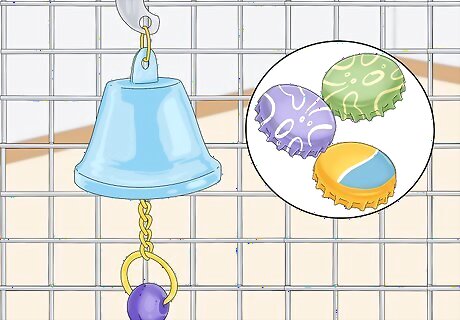
Provide playthings. Purchase toys and other playful things for your bird. Mirrors, bells, bottle caps, and other small items can serve as toys for your mynah bird. These products will help keep your bird happy and engaged. Avoid rope toys because they can get caught in your bird’s tongue or toenails.
Socializing Your Mynah Bird
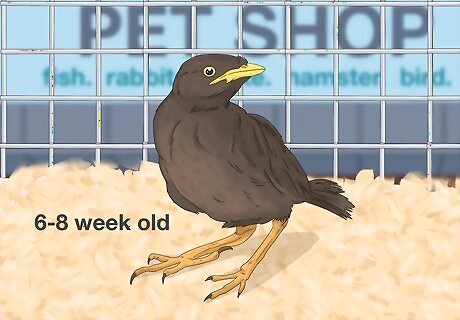
Buy a baby mynah bird. The easiest way to socialize a mynah bird is to buy it as a chick. Ideally, this means purchasing a 6-8 week old bird. Mynah birds begin speaking at three to four months and tend to quit learning new words once they reach two years of age. Unless you are okay with the words that they have already learned, you may want to consider a baby mynah bird. Begin speaking to the young bird as soon as you bring it home. Initially, give it simple words like “hello” or “hi.”
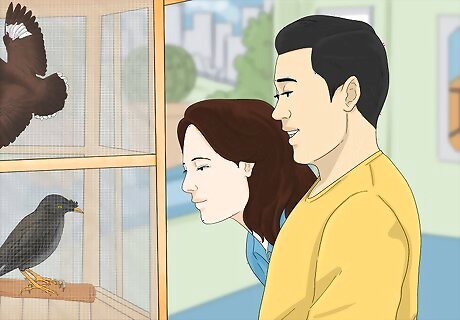
Place the cage in a busy place. Because mynah birds are extremely social and tend to enjoy human interaction, they can be easily socialized. The best way to do this is to put them in a place where they can talk to multiple people and develop their language skills. They may also form a strong bond with the person who cleans their cage and feeds them. Mynahs also have good memories and remember mistreatment. They will hold grudges and dislike people who resemble the person who mistreated them.

Teach your mynah specific words. In order to train it, simply pick a short word or phrase and say it every time you see your bird. Unfortunately, you only have about a year and a half to teach them those words. Although mynah’s can learn new words until about the age of two, your mynah is the most impressionable between the ages of three and nine months. Mynah birds are capable of learning over 100 words. If you live with other people, encourage them to also say the words you want around the mynah bird.
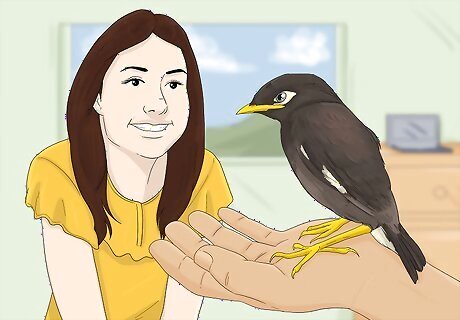
Condition your bird to different things. Because they are the most impressionable when they are young, you should socialize your bird to new people and things when it is a baby. In the first few months to a year, expose your young bird to new people and things (cats and dogs, household appliances), as well as travel with it. This will make it a calmer, better adjusted, and more social pet. This will also make it less likely to be frightened and, therefore, healthier.


















Comments
0 comment